Abstract
A double blind, crossover study of fibrinolytic enhancement treatment using stanozolol has been performed in primary Raynaud's phenomenon and in systemic sclerosis. The outcome criteria included subjective evaluation, clinical examination, physiological measurements of peripheral blood flow, and fibrinolytic measurements. Nineteen patients entered and 11 completed the study of primary Raynaud's phenomenon. There was nonsignificant evidence of improvement in peripheral blood flow. Twenty four patients entered and 17 completed the study of systemic sclerosis. There was marked objective but not subjective evidence of improvement in the peripheral microcirculation during the stanozolol treatment period. There was also a nonsignificant improvement in dermal sclerosis. There were improvements in fibrinolytic activity during the stanozolol treatment period. There was no alteration in fibrinolytic reserve as measured by 1-desamino-8-D-arginine vasopressin stimulation, however. Although adverse events were common in both treatment periods, withdrawals predominantly occurred during the period of treatment with stanozolol and were principally due to anabolic problems. There does not seem to be any indication for the use of stanozolol in primary Raynaud's phenomenon. Fibrinolytic enhancement with stanozolol does appear useful in treating the microvascular features of systemic sclerosis.
Full text
PDF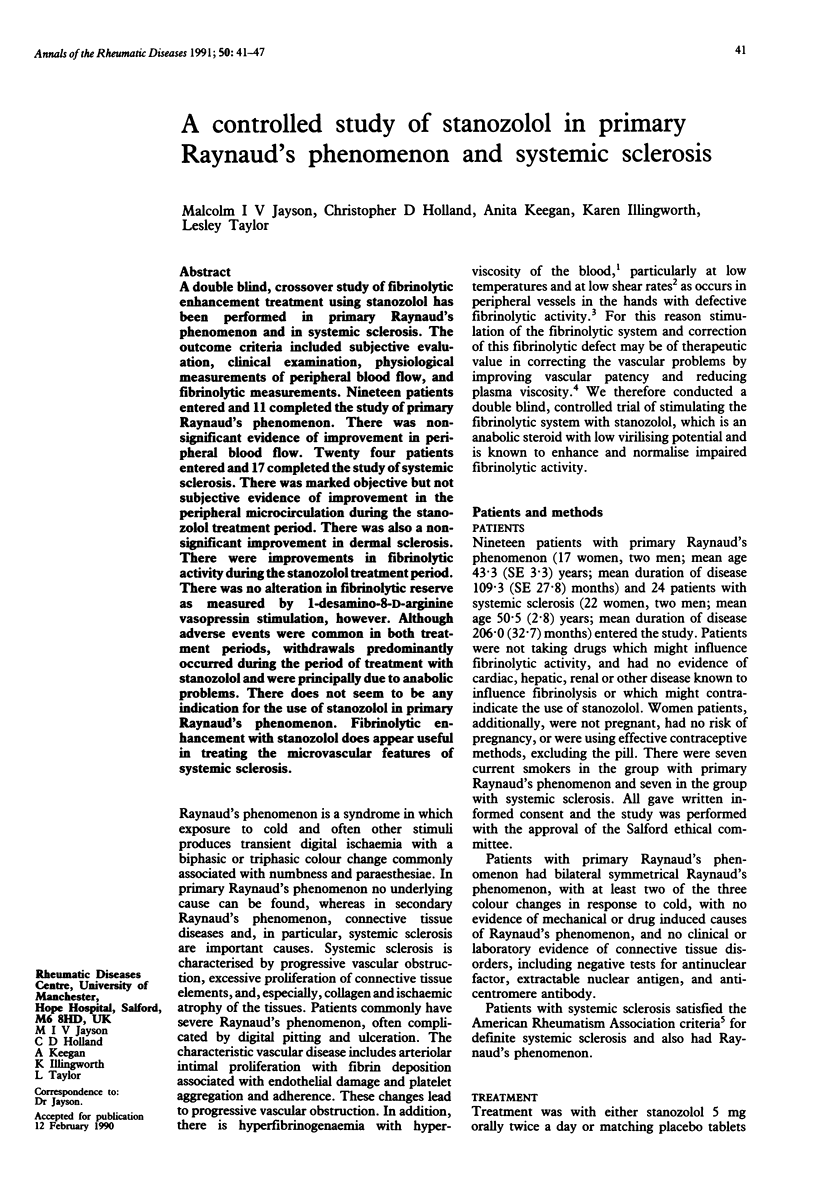
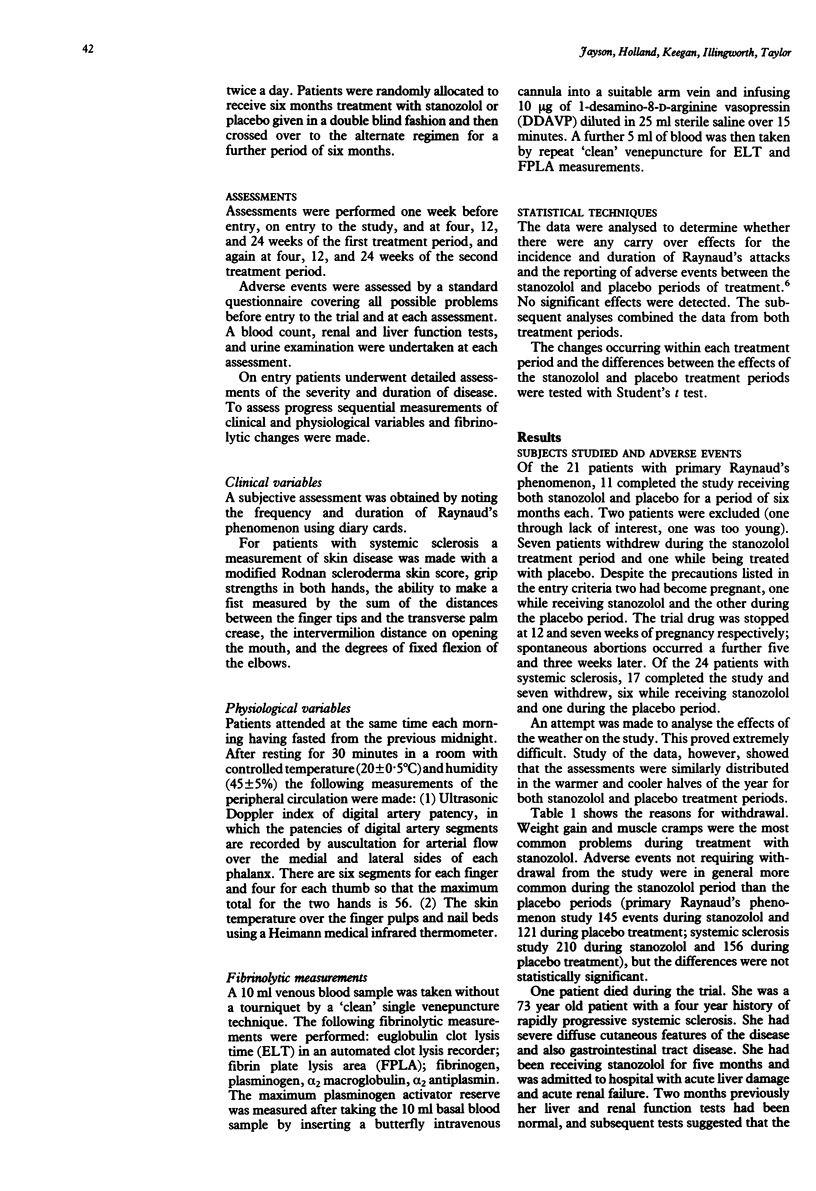
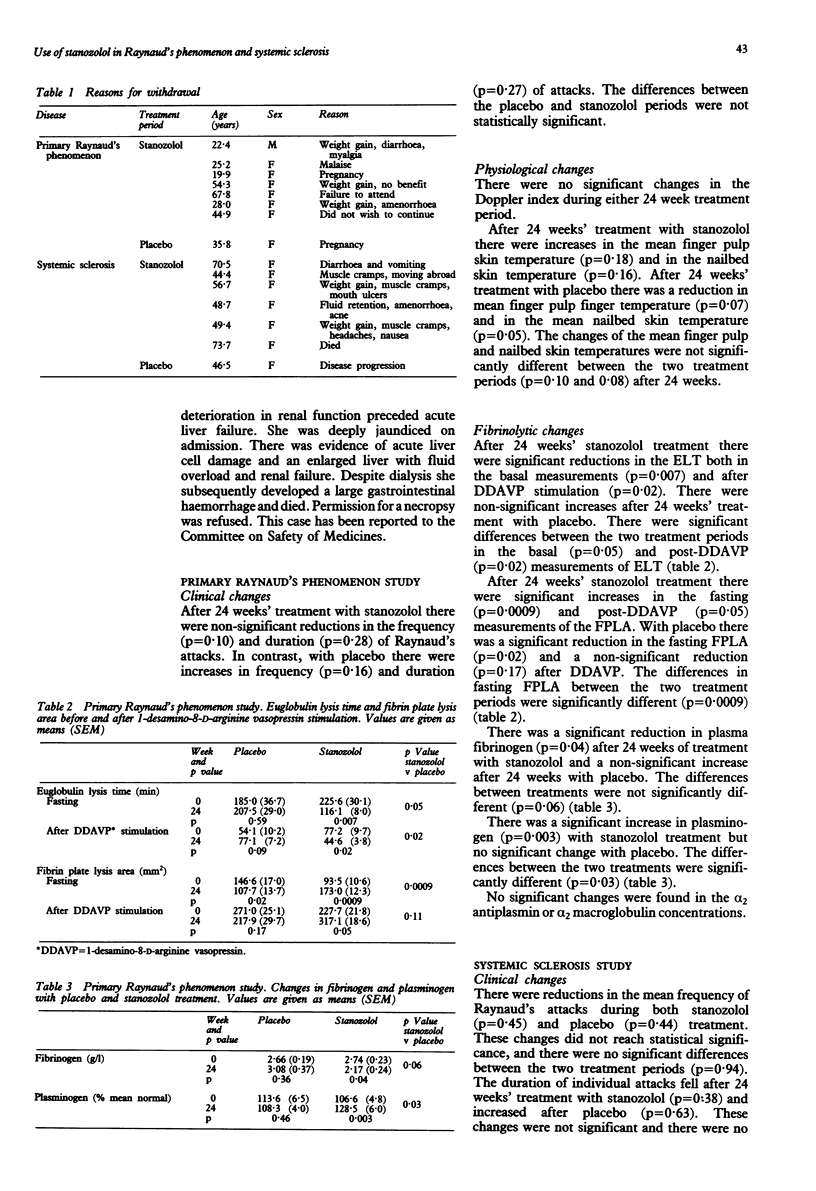
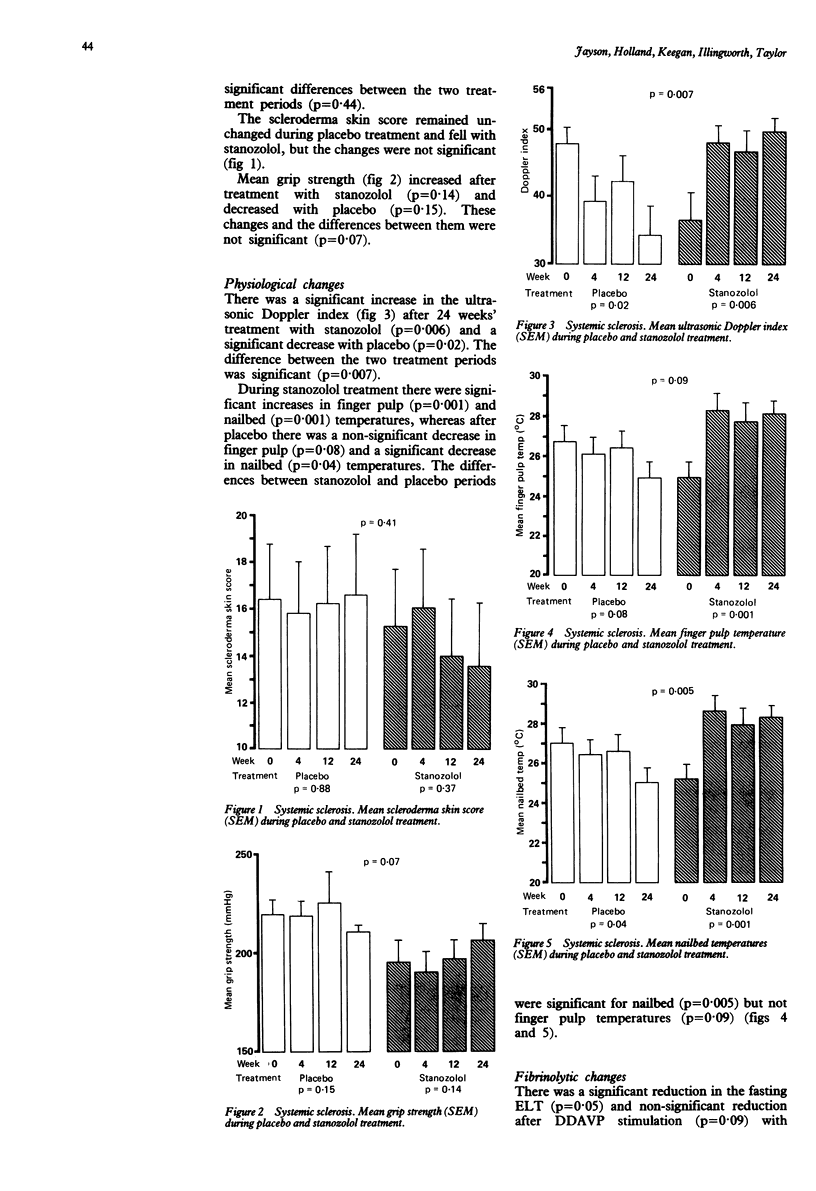
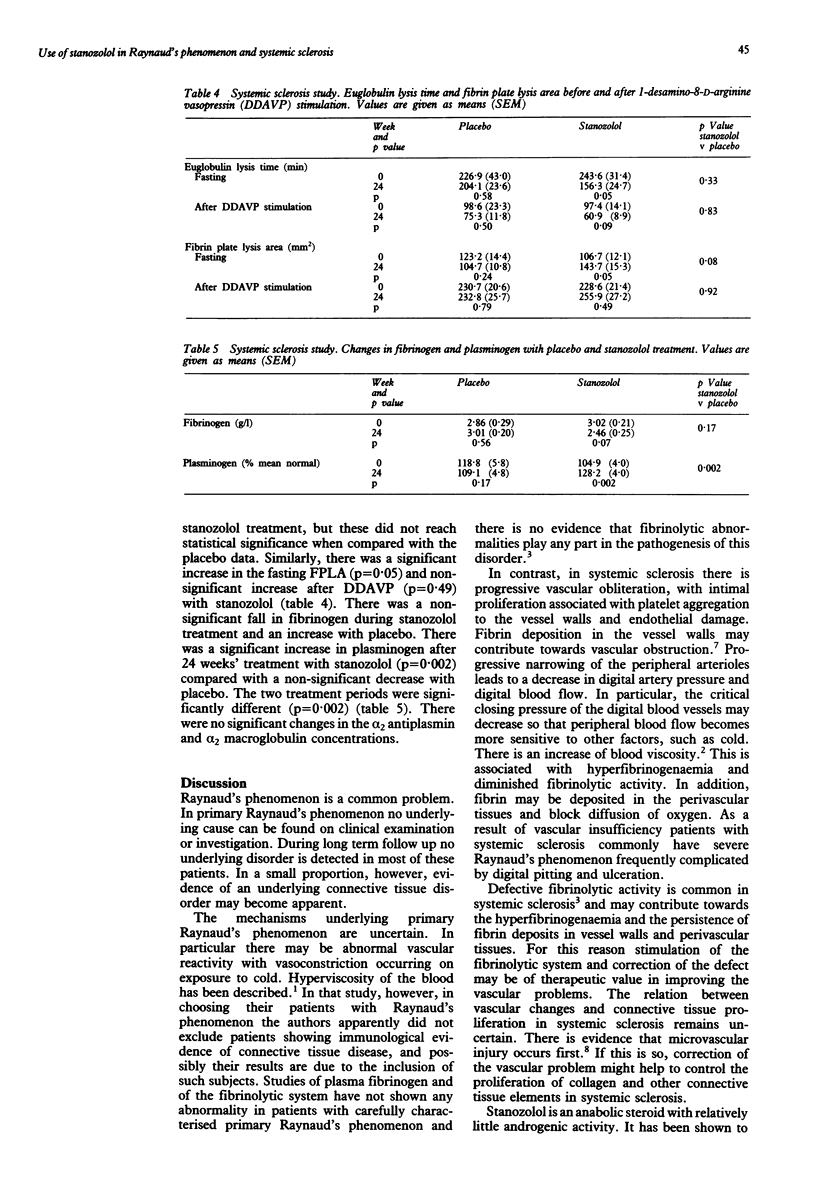
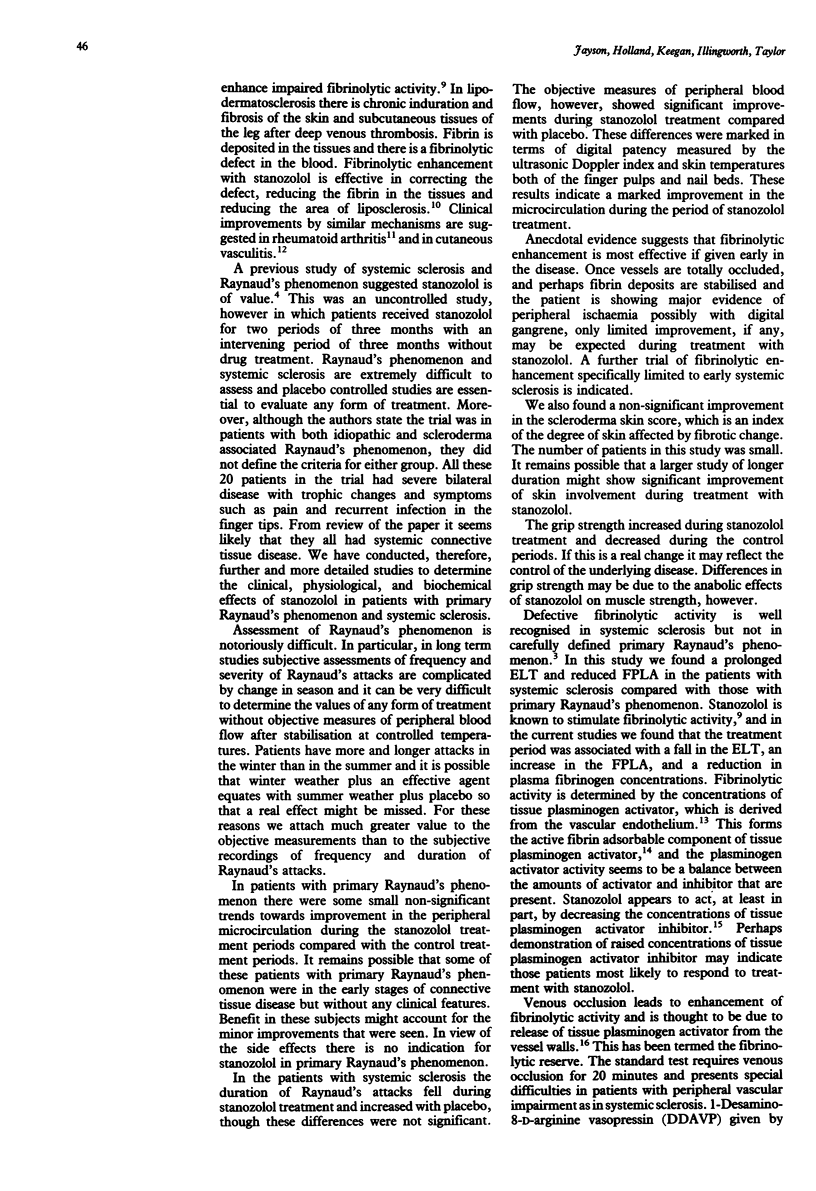
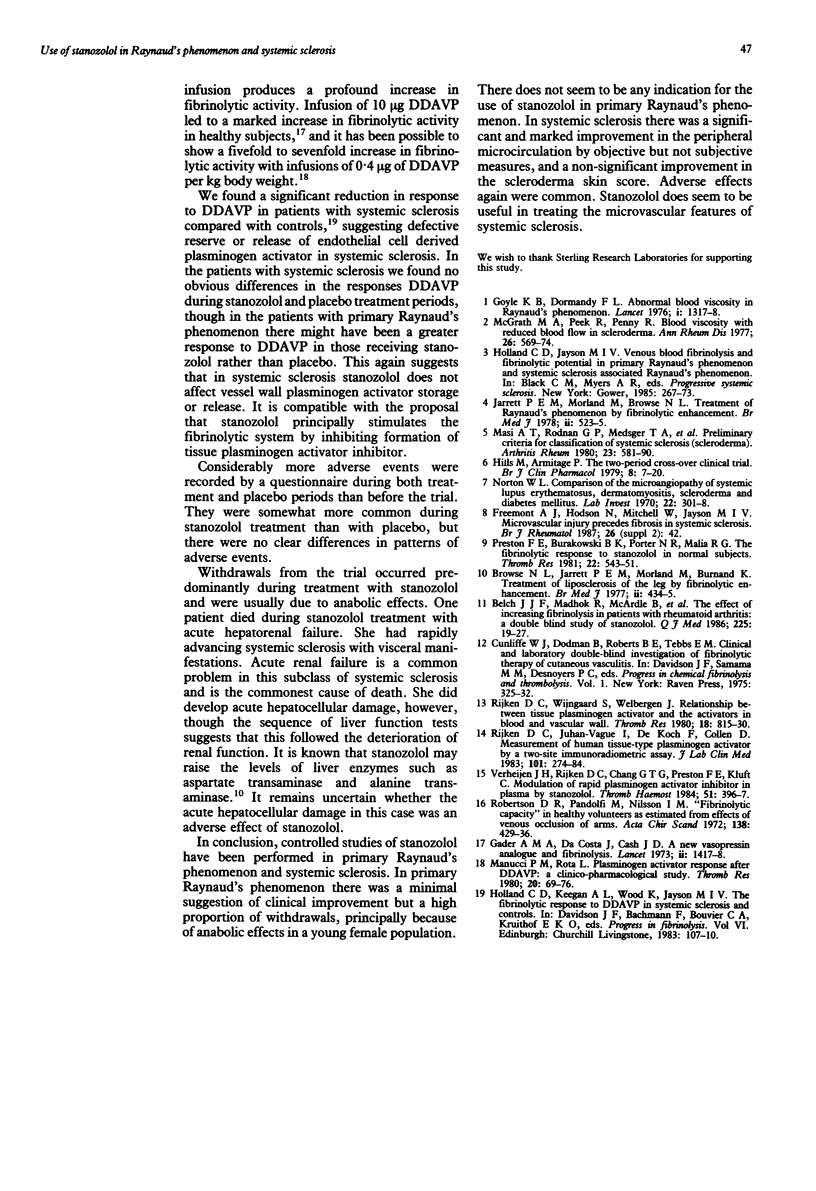
Selected References
These references are in PubMed. This may not be the complete list of references from this article.
- Belch J. J., Madhok R., McArdle B., McLaughlin K., Kluft C., Forbes C. D., Sturrock R. D. The effect of increasing fibrinolysis in patients with rheumatoid arthritis: a double blind study of stanozolol. Q J Med. 1986 Jan;58(225):19–27. [PubMed] [Google Scholar]
- Browse N. L., Jarrett P. E., Morland M., Burnand K. Treatment of liposclerosis of the leg by fibrinolytic enhancement: a preliminary report. Br Med J. 1977 Aug 13;2(6084):434–435. doi: 10.1136/bmj.2.6084.434. [DOI] [PMC free article] [PubMed] [Google Scholar]
- Gader A. M., da Costa J., Cash J. D. A new vasopressin analogue and fibrinolysis. Lancet. 1973 Dec 22;2(7843):1417–1418. doi: 10.1016/s0140-6736(73)92805-5. [DOI] [PubMed] [Google Scholar]
- Goyle K. B., Dormandy J. A. Abnormal blood viscosity in Raynaud's phenomenon. Lancet. 1976 Jun 19;1(7973):1317–1318. doi: 10.1016/s0140-6736(76)92651-9. [DOI] [PubMed] [Google Scholar]
- Hills M., Armitage P. The two-period cross-over clinical trial. Br J Clin Pharmacol. 1979 Jul;8(1):7–20. doi: 10.1111/j.1365-2125.1979.tb05903.x. [DOI] [PMC free article] [PubMed] [Google Scholar]
- Jarrett P. E., Morland M., Browse N. L. Treatment of Raynaud's phenomenon by fibrinolytic enhancement. Br Med J. 1978 Aug 19;2(6136):523–525. doi: 10.1136/bmj.2.6136.523. [DOI] [PMC free article] [PubMed] [Google Scholar]
- Mannucci P. M., Rota L. Plasminogen activator response after DDAVP: a clinico-pharmacological study. Thromb Res. 1980 Oct 1;20(1):69–76. doi: 10.1016/0049-3848(80)90057-2. [DOI] [PubMed] [Google Scholar]
- McGrath M. A., Peek R., Penny R. Blood hyperviscosity with reduced skin blood flow in scleroderma. Ann Rheum Dis. 1977 Dec;36(6):569–574. doi: 10.1136/ard.36.6.569. [DOI] [PMC free article] [PubMed] [Google Scholar]
- Norton W. L. Comparison of the microangiopathy of systemic lupus erythematosus, dermatomyositis, scleroderma, and diabetes mellitus. Lab Invest. 1970 Apr;22(4):301–308. [PubMed] [Google Scholar]
- Preston F. E., Burakowski B. K., Porter N. R., Malia R. G. The fibrinolytic response to stanozolol in normal subjects. Thromb Res. 1981 Jun 1;22(5-6):543–551. doi: 10.1016/0049-3848(81)90052-9. [DOI] [PubMed] [Google Scholar]
- Rijken D. C., Juhan-Vague I., de Cock F., Collen D. Measurement of human tissue-type plasminogen activator by a two-site immunoradiometric assay. J Lab Clin Med. 1983 Feb;101(2):274–284. [PubMed] [Google Scholar]
- Rijken D. C., Wijngaards G., Welbergen J. Relationship between tissue plasminogen activator and the activators in blood and vascular wall. Thromb Res. 1980 Jun 15;18(6):815–830. doi: 10.1016/0049-3848(80)90204-2. [DOI] [PubMed] [Google Scholar]
- Robertson B. R., Pandolfi M., Nilsson I. M. "Fibrinolytic capacity" in healthy volunteers as estimated from effect of venous occlusion of arms. Acta Chir Scand. 1972;138(5):429–436. [PubMed] [Google Scholar]
- Verheijen J. H., Rijken D. C., Chang G. T., Preston F. E., Kluft C. Modulation of rapid plasminogen activator inhibitor in plasma by stanozolol. Thromb Haemost. 1984 Jul 29;51(3):396–397. [PubMed] [Google Scholar]


